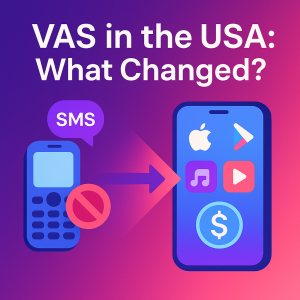The Federal Communications Commission (FCC) has taken a groundbreaking step by approving SpaceX’s use of Starlink satellites for T-Mobile’s cell service. This partnership aims to eliminate mobile dead zones across the United States, marking a significant milestone in satellite-based cellular technology.
The Starlink-T-Mobile Partnership: Revolutionizing Connectivity
SpaceX’s Starlink, known for its global high-speed satellite internet, is now expanding into cellular services. Using up to 7,500 Gen2 satellites, Starlink will initially support SMS texting and emergency alerts, with plans to introduce voice and data services in the future. Operating as Supplemental Coverage from Space (SCS), this system is designed to work with unmodified cell phones using T-Mobile’s existing network spectrum.
T-Mobile has exclusive rights to this innovative service in the U.S. for the first year, positioning the carrier as a leader in satellite-cellular integration. This exclusivity could reshape the competitive landscape of the telecommunications industry.
Implementation and Challenges
Starlink’s direct-to-cell system has already proven effective during hurricanes, offering critical emergency alerts and SMS capabilities. Beta testing is underway for SpaceX employees in the U.S., signaling progress towards broader public availability.
However, the FCC’s approval comes with important caveats:
• Increased satellite power for real-time voice and video calls is still under review.
• The deployment of an additional 22,488 satellites is pending FCC evaluation.
• SpaceX must adhere to strict operational parameters to ensure regulatory compliance.
These limitations underline the delicate balance between technological advancement and regulatory oversight in this rapidly evolving field.
Potential Impact on Cellular Coverage
The approval of Starlink’s direct-to-cell service is a game-changer, especially for rural and remote areas. FCC Chairwoman Jessica Rosenworcel emphasized the importance of eliminating mobile dead zones, highlighting the partnership’s potential to:
• Enhance emergency communications during disasters.
• Provide connectivity for outdoor enthusiasts, remote workers, and underserved regions.
• Boost economic opportunities in isolated communities.
• Serve as a safety net for travelers in areas lacking cellular infrastructure.
This breakthrough could also inspire similar initiatives globally, transforming the telecommunications landscape.
Starlink’s Proven Track Record
Before venturing into cellular connectivity, Starlink revolutionized satellite internet by offering:
• High-speed internet with download speeds of 100-200 Mbps and low latency of 20ms.
• A user-friendly satellite dish kit for easy setup.
• Coverage in areas where traditional fiber-optic networks are impractical.
By leveraging a dense network of low-Earth orbit satellites, Starlink overcame the limitations of traditional geostationary satellites, providing faster and more reliable internet.
The Future of Satellite-Based Telecom
The collaboration between SpaceX and T-Mobile represents a significant leap forward in addressing connectivity challenges. By bridging gaps where traditional infrastructure fails, this initiative demonstrates the potential of satellite technology to revolutionize telecommunications.
With FCC approval and strategic planning, Starlink and T-Mobile are set to redefine cellular coverage, ensuring that no corner of the U.S. remains disconnected. As this technology evolves, it promises to set a global precedent, unlocking new opportunities for industries and individuals alike.
Dragons, keep an eye on these developments. This innovation could transform not just connectivity but also the marketing strategies for your campaigns.



















































